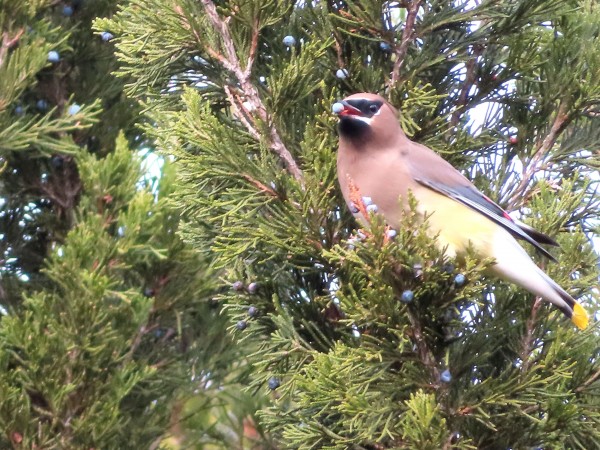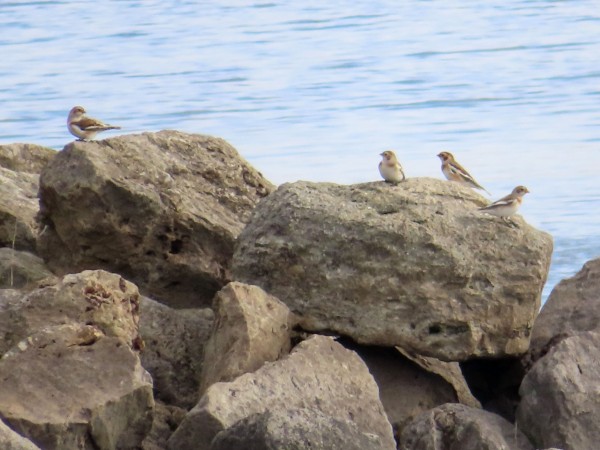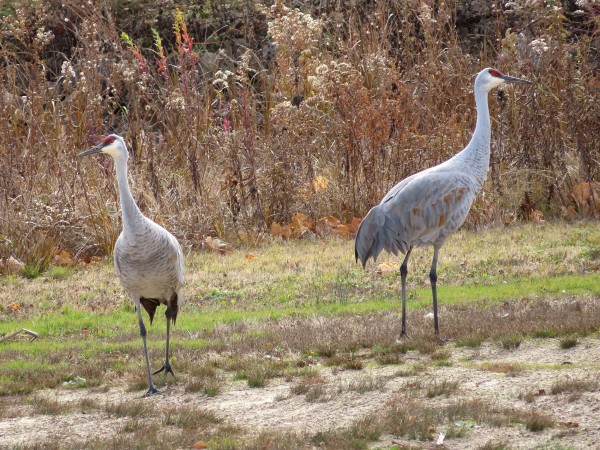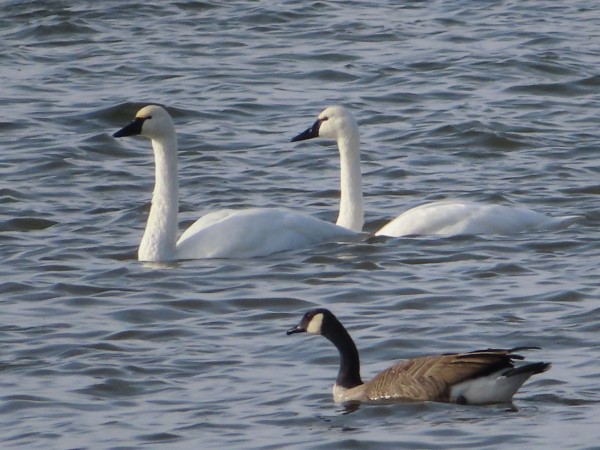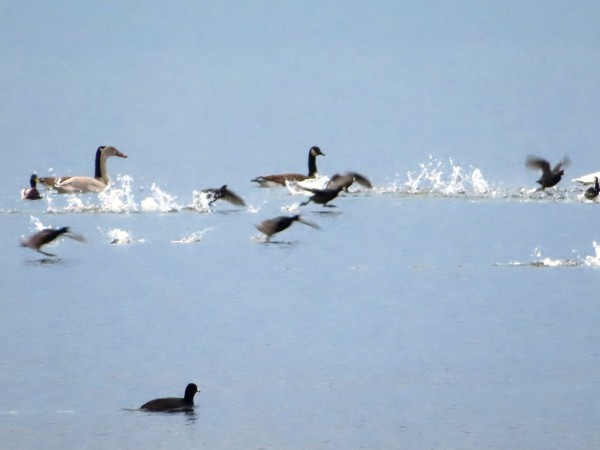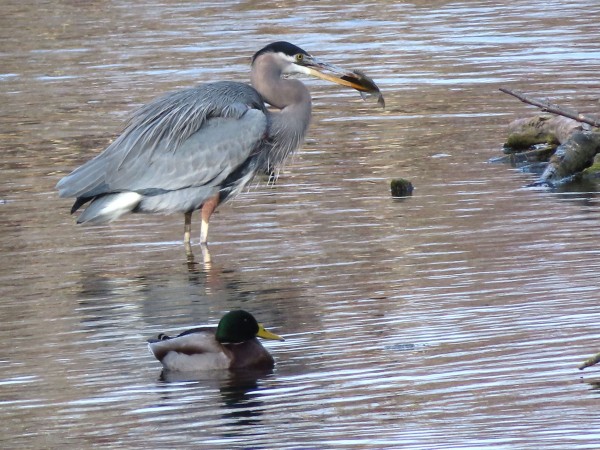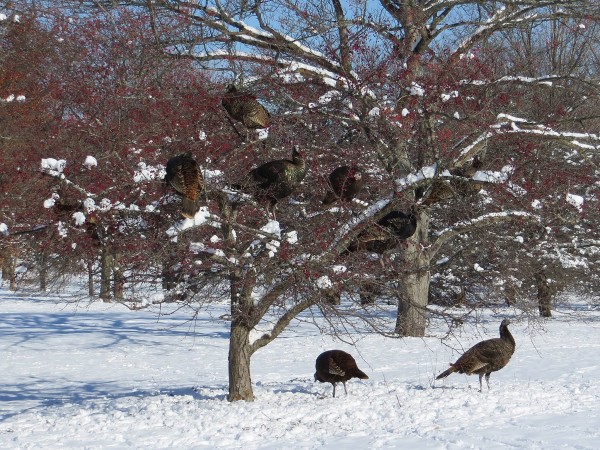Chuck's Birding Report #88
16 November - 22 November 2021
Dear fellow flock of birders,
When I went for my walk in the Arb this morning it was 17 degrees when I left the house but 21 degrees by the time I reached the Arb at 7:00am. Wow, what a heat wave! It was the coldest it had been in the Arb this fall but I was dressed for it.
There’s not much to say about wildflowers and trees this time of year. Various shades of brown for both seem to predominate. Seed heads on wildflowers are being attacked by American Tree Sparrows and American Goldfinches. Ice has formed on a third of Pond 2 and the green algae which had previously covered the pond is now gone. Teal Pond is completely covered with ice. The Big Spring is open because 50 to 55 degree water is constantly running from the spring keeping the outflow open all winter.
So what birds are left in the Arboretum. The number of species is down and the number of each species is down too. Some exceptions are American Robins, European Starling and Cedar Waxwings. Last Tuesday we saw about 40 Cedar Waxwings but since then the numbers have dropped to 10 or 20. The Cedar Waxwings feed in the Crabapple Trees in the Crabapple Collection and in the Junipers in the Pinetum. Included is a photo of a Cedar Waxwing with a Juniper berry in its beak.
We did see the Northern Shrike last Tuesday. It had disappeared for a few days but had returned. On Saturday I saw it again. It was initially at the top of a tall tree. It then came down and I saw it chase a male Northern Cardinal. Luckily the cardinal out maneuvered the shrike and escaped. It definitely was an exciting chase however. A photo of a Northern Shrike perched in a low bush from Saturday is included.
I birded another Dane County bird area last Wednesday and that was Governor Nelson State Park. There I heard my first flock of Tundra Swans. They make a distinctive hoo hoo hoo sound. Look up the sound that they make so you can identify them when they fly over or are swimming in a lake. Also that day I saw a small flock of 12 Snow Buntings. Normally I only see one or two feeding along the roadside in the winter but this flock landed on the large rocks near the beach. They stayed just long enough for me to get a couple photos. One photo of 4 Snow Buntings is included.
While I was at Gov. Nelson two Sandhill Cranes landed near the beach too. This time of year they have molted into their all gray plumage. They look so different from their rusty colored summer plumage whose color is created by preening with soil. A photo of the two Sandhill Cranes is included.
By the way I saw our family of 4 Sandhill Cranes (2 adults and 2 colts) fly over me this morning. At least I think they were “our family” that we first saw on May 4th and have been watching them grow all summer and fall.
I have been searching for Tundra Swans ever since I heard the flock last Wednesday. I actually saw my first Tundra Swans last Friday. There were 7 on Lake Monona, another location in Dane County. I saw 4 on University Bay on Sunday. On the same bay today I saw 26 so the numbers are rising. The high number last winter was about 500 but my highest number on University Bay was on 18 Dec 2017 when I actually counted one by one 1,060 Tundra Swans in University Bay. That was quite a sight and also a cacophony of sound made by many of the Tundra Swans.
I have two photos of Tundra Swans included. One shows a pair of adult, all white Tundra Swans and, for size comparison, a Canada Goose. The other photo was just a fluke. I was trying to photograph just the Tundra Swans when something spooked some American Coot. When they need to fly up from the water they look like they run on the water for a bit before they actually lift off. The photo shows them running and splashing at the same time with the Tundra Swans, 3 adults and one gray cygnet, in the background. I thought it really was an interesting, non-intentional, image.
On today’s bird walk, even though it was cold, I saw a pair of Bald Eagles fly over. One was an adult with a white head and a white tail. The other was an immature Bald Eagle with mostly dark brown feathers and some white sprinkled here and there in its plumage. Both circled above me and flew off. I also saw 2 Red-tailed Hawks and 4 hawks I could not identify because they were just too far away. I also heard a flock of Tundra Swans hoo-hooing in the distance but did not see it.
I did go down to the Big Spring today too. There were 22 Mallards and 8 Gadwalls in the outflow. For the past week birders have been seeing a Great Blue Heron at the end of the outflow of the spring just before it turns to the right. Every year 1 or 2 Great Blue Herons stay for the winter spending their time fishing and sleeping in the various springs in the Arboretum. Next time you’re down at Big Spring look for the heron either on the right or left sides at the far end of the outflow. The included photo shows the heron with a small fish (maybe a sunfish) in its beak.
My last photo is a Thanksgiving photo. While you and I are feasting on turkey, dressing, mashed potatoes and gravy as well as stuffing ourselves with Cranberries, the Wild Turkeys in the Arboretum are climbing the trees in the Crabapple Collection and stuffing themselves with Crabapples, thus the included photo.
That’s the bird report for the past week.
Have a great Thanksgiving and I wish you all good health and good birding too,
Chuck

